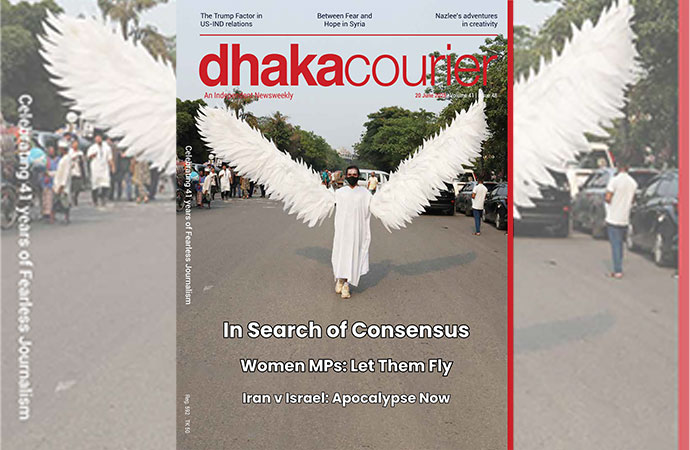Featured 1

The move by the Bangladesh Bureau of Statistics (BBS) to start publishing quarterly GDP data is a welcome move towards more data-driven decision making in the public sector, that should in due time permeate all sectors. Although mainly driven by the IMF, which mandated the publication of key economic data as part of a push for greater transparency in the country's finances, we must commend the BBS, which has shown greater initiative and professionalism since M.A. Mannan took the helm at the Ministry of Planning, for embracing the recommendation from the global lender of last resort fairly swiftly.
As part of the first data dump under this initiative, the BBS published the quarterly GDP data for the 2016-17 to 2021-22 fiscals this week, and they contain some interesting revelations. The BBS hopes to publish the 2022-23 fiscal's data, quarter by quarter, in November, followed by the current quarter's, i.e. Q1 of the 2023-24 fiscal, in January. Once it is up-to-date, we may expect regular quarterly updates.
The first release is revealing with regards to the quite catastrophic impact the COVID-19 pandemic inflicted on the economy. The economy contracted by a massive 7.86 percent (annualised) in the last quarter of the 2019-20 fiscal (i.e. April to June 2020), when the virus began to spread and the death toll started climbing. It may be recalled here that Bangladesh imposed a lockdown in the face of the virus reaching these shores and starting to spread for the first time in late March of 2020.
The first serious lockdown was announced by the government in mid-April, which meant that barring emergency services, all government and private offices and factories remained closed. Public transport services were suspended, forcing many out of jobs. The informal economy was hit badly, with many of the workers in the sector, often day-labourers and the floating, migrant populations that flock for jobs to the cities, forced to return to their rural bases. According to the newly released data from BBS, the economy was on course to grow at above 7 percent based on the performance in the first three quarters of 2019-20. But the lockdown saw the entire economy grind to a halt - all except health, public administration and real estate. The vital industrial sector, which accounts for around 33 percent of GDP, shrank by an eye-watering 15 percent in the last quarter of the said fiscal.
At the time, policymakers were often found lamenting the lack of any authentic data to assess the state of the economy under the impact of the virus. Some think-tanks, which had no access to GDP data, tried to capture the hit to the economy in different ways, such as surveys to estimate the populations below or above the poverty line. These were mostly ignored by the government, or even dismissed as unreliable. We now know the slump continued in earnest through the first two quarters of the 2020-21 fiscal. The economy finally bounced back from the third quarter of FY21, after the government eased restrictions. In the last quarter of the fiscal year, the economy boomed 21.67 percent.
With such important data at policymakers' fingertips now, we can hope that when the next pandemic or other such shock hits the economy, our policy response will be much more informed and assured.

























Leave a Comment
Recent Posts
Harrowing stories of rescue em ...
In the frantic hours after a wall of water engulfed camps and homes in ...
On the chin: Trump’s tariff a ...
The 90-day pause on Donald Trump’s radical restructuring of Amer ...
Reimagining the OST: ‘Utshob’ is an ode to the 90s, ..
‘Married to Journalism’: Adieu to Shamim Ahmad
The High Court released the full text of its judgmen ..
Chipmaker Nvidia became the first public company to ..